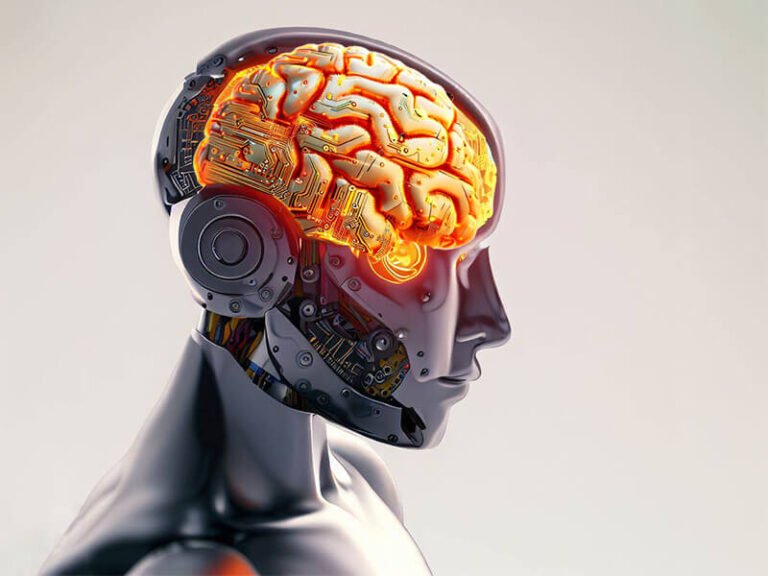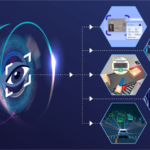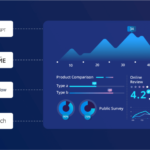
Introduction
Robotic applications of deep learning has brought about significant changes in the manner that machines perceive and act in the environment. They are more competitive, intelligent nowadays, and able to complete various tasks.
Artificial Intelligence is an ability of the robots to learn and take appropriate decisions through processing data and recognizing patterns.
In all the areas of concern, deep learning creates numerous improvements in robotics, from automation to healthcare. The following work seeks to analyze some of the ways by which AI is enhancing robot intelligence and performance.
What is Deep Learning in Robotics?
Deep learning in robots can be described as the ability of robots to learn from data using artificial intelligence. Of the several available methods, this lets robots understand images, transform speech into text, and predict outcomes. Unlike other forms of programming, deep learning enables the robots to develop the ability to learn on their on. Through emulating the brain of human beings, deep learning improves the decision making as well as the problem solving capabilities of robots/robots.
How Deep Learning Works in Robotics
Deep learning entails the use of artificial neural networks (ANNs) for analysis and making decision from large volumes of data. These are the imitation of the human brain networks to enable robots to discern results of various processes or make decisions.
Thus, using large datasets increases the robots’ performance on the related tasks. They get cleverer the moment they undertake the analysis of a large quantity of data. Thus, deep learning becomes important for solving the problem of increasing robotic intelligence.
Applications of Deep Learning in Robotics
Deep learning has impacted a number of fields where robots have become smarter. The current use of computer vision is in the identification of diseases, production control in manufacturing industries, self-driving cars, and customer support service.
Presently, deep learning robots can even swim, read, write, transform from one state to another, diagnose diseases understand human speech and so on. These applications enhances operational efficiency, safety, as well as productivity of different sectors.
Robotics in Healthcare with Deep Learning
Robotic platforms in the medical fields are brought about by deep learning, thus helping in procedures such as surgery, diagnosis, and treatment. Digitalized machines learn how to diagnose diseases through examination of photos and scans.
The use of robots aids doctors in that they assist when performing delicate operations. Deep also applies to prosthetics improves prosthetics, making the robotic limbs move such as human limbs. Robotics technology has a very wide application in the broad sectors of healthcare industry.
Autonomous Vehicles and Deep Learning
Self-sponsored automobiles require the use of deep learning to analyze the roads and make the right decision. Computer vision technology using a series of cameras, sensors and GPS in order to make driving decision.
As such if the net profit or loss is positive it is retained and if it is negative it is learned from and Experience vehicles add on to their efficacy over the course of their operation. Artificial intelligence in transportation through deep learning helps self-driven cars identify pedestrians, traffic signals and signs, and relatively avoid approaching motorist to make the roads safe.
Deep Learning in Manufacturing and Automation
This is done through the use of robots that are created by deep learning techniques to help factories speed up production. These are machines which relieve human beings from any dull and monotonous jobs which they are capable of doing with great efficiency. AI escalates productivity and minimizes on various human errors that could be costly to the business.
In the manufacturing sector, robots are known to be useful in product manufacture, assessment of quality, and other duties such as the prediction of a machine’s suitability for use. They improve ability of robotics to adapt to operations and prompt increased productivity and lower costs of industries.
Human-Robot Interaction with Deep Learning
From this aspect, it is evident that deep learning makes it possible for robots to comprehend speech and even emotions. Since the AI-powered chatbots and assistants are with people it is normal for them to be interactive.
Realizing customer feelings in the line of work and assisting them individually is becoming possible with robots in customer service. and further enhances the user necessities and the necessities of the human-robotic interaction for an enhanced user experience.
Challenges in Deep Learning for Robotics
Thus, it can be noted that despite the progress that has been made in deep learning for robotics, this field has problems. The practice of training an AI calls for vast resources including data and strong computing power. The adaptive part of robots’ actions is that the AI they possess hampers their functioning due to the inability to predict the situations outside the training set.
There are concerns in ethical values as well, specifically in the autonomous decision making. That is why it is essential to attend to addressing these challenges to be able to advance the reliability and safety of such systems in robots.
Future of Deep Learning in Robotics
The future of deep learning in robotics is in a good state. AI will persist in enhancing the possibilities of robotic, in this way robotic will be wise and effective constantly. Neural networks of robots will also experience improvements in learning speed and learning effectiveness.
Future robots, therefore, will be fully integrated into human daily activities and organizations to leverage the performance of several industries. The future of robots will be smarter depending on the continuous innovation process that is set to take place.
Ethical Considerations in AI Robotics
Advanced artificial intelligence raises various ethical issues since, with increasing intelligence, robots are almost like humans. Issues like job displacement, privacy, and AI bias need attention. AI regulation requires that robots that are empowered by artificial intelligence have to give proper conduct.
It is crucial to maintain the morality of an artificial intelligence by containing an integration of automation and the rights of individuals. Consequently, understanding these concerns will go a long way in developing confidence in deep learning-driven robotics.
Conclusion
Artificial intelligence in robotics is revolutionalizing industries and enhancing human existence. Robots in existence are intelligent; they are capable of working and improving on what they are programmed, and they can easily relate with the human beings.
Taking this into consideration, the future is bright for robots as the artificial intelligence sector improves. with enlightening deep learning, thus the robots in many fields will be more intelligent, safer, and more capable robots.







